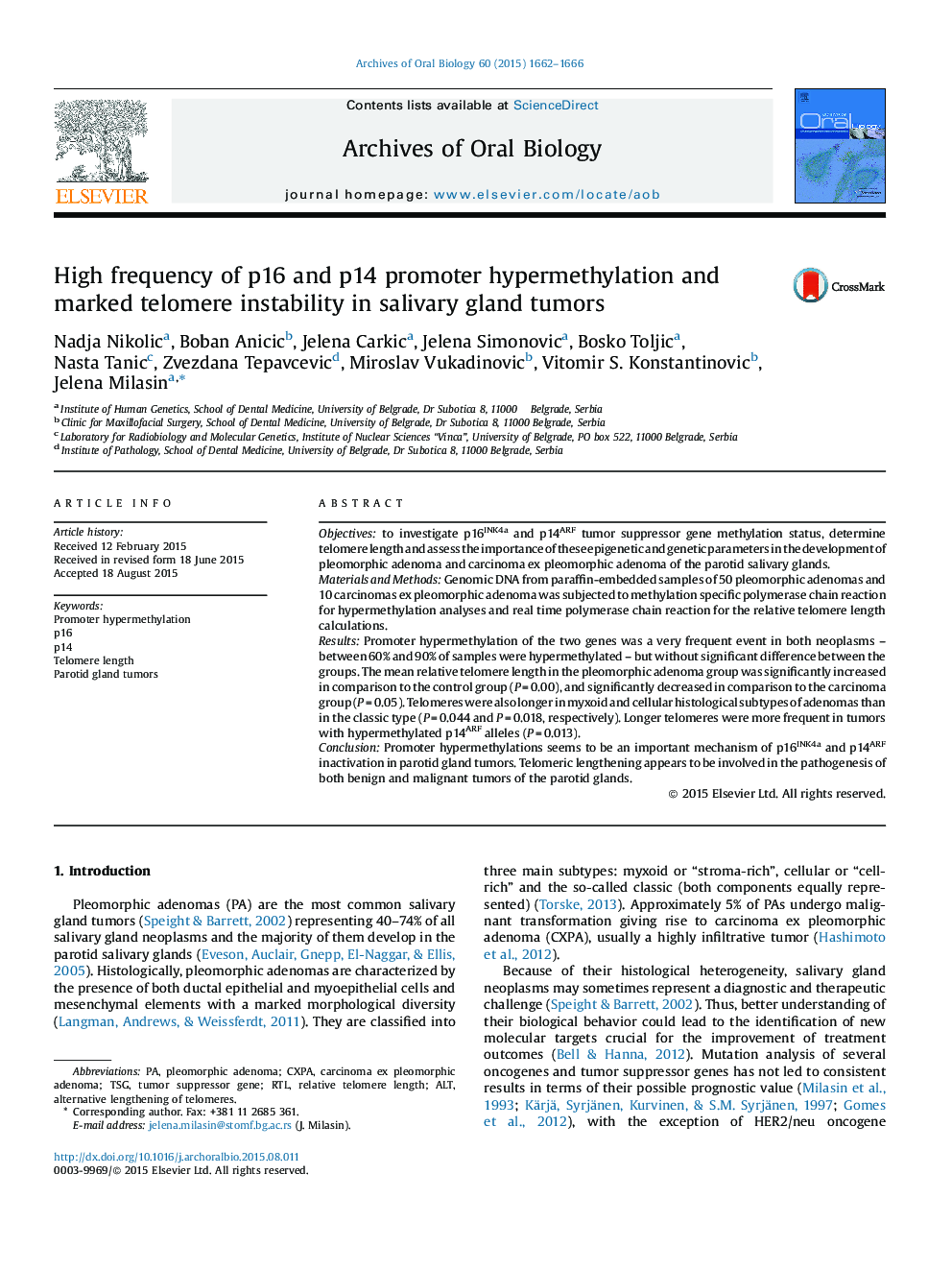| Article ID | Journal | Published Year | Pages | File Type |
|---|---|---|---|---|
| 6050827 | Archives of Oral Biology | 2015 | 5 Pages |
â¢Methylation is a common mechanism of p16 and p14 inactivation in parotid gland tumors.â¢Methylation of p16 is related to high grade carcinoma ex pleomorphic adenomas.â¢Parotid gland neoplasms are characterized by marked telomere lengthening.
Objectivesto investigate p16INK4a and p14ARF tumor suppressor gene methylation status, determine telomere length and assess the importance of these epigenetic and genetic parameters in the development of pleomorphic adenoma and carcinoma ex pleomorphic adenoma of the parotid salivary glands.Materials and MethodsGenomic DNA from paraffin-embedded samples of 50 pleomorphic adenomas and 10 carcinomas ex pleomorphic adenoma was subjected to methylation specific polymerase chain reaction for hypermethylation analyses and real time polymerase chain reaction for the relative telomere length calculations.ResultsPromoter hypermethylation of the two genes was a very frequent event in both neoplasms - between 60% and 90% of samples were hypermethylated - but without significant difference between the groups. The mean relative telomere length in the pleomorphic adenoma group was significantly increased in comparison to the control group (PÂ =Â 0.00), and significantly decreased in comparison to the carcinoma group (PÂ =Â 0.05). Telomeres were also longer in myxoid and cellular histological subtypes of adenomas than in the classic type (PÂ =Â 0.044 and PÂ =Â 0.018, respectively). Longer telomeres were more frequent in tumors with hypermethylated p14ARF alleles (PÂ =Â 0.013).ConclusionPromoter hypermethylations seems to be an important mechanism of p16INK4a and p14ARF inactivation in parotid gland tumors. Telomeric lengthening appears to be involved in the pathogenesis of both benign and malignant tumors of the parotid glands.
